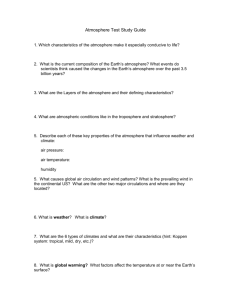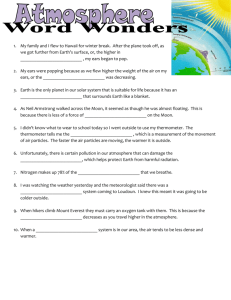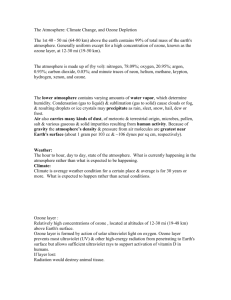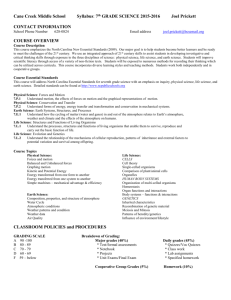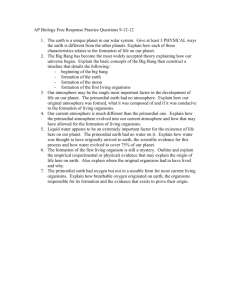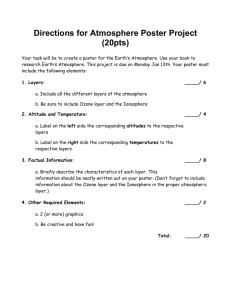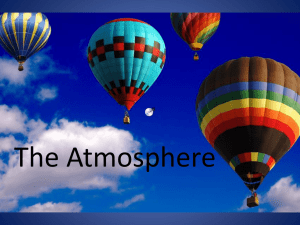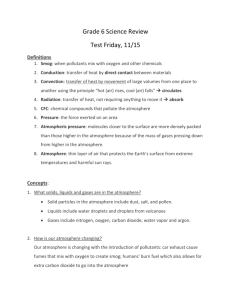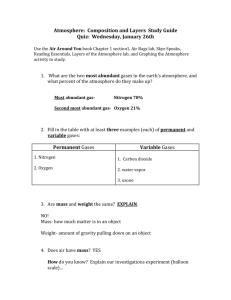How Earth`s Atmosphere Got Its Oxygen
advertisement
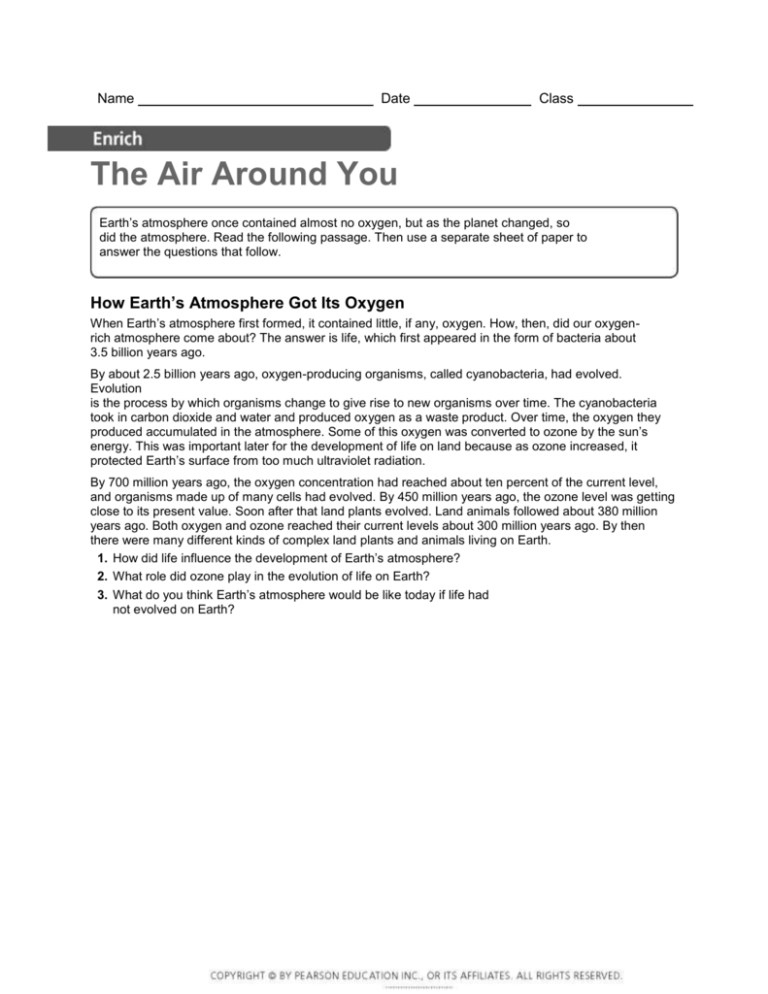
Name Date Class The Air Around You Earth’s atmosphere once contained almost no oxygen, but as the planet changed, so did the atmosphere. Read the following passage. Then use a separate sheet of paper to answer the questions that follow. How Earth’s Atmosphere Got Its Oxygen When Earth’s atmosphere first formed, it contained little, if any, oxygen. How, then, did our oxygenrich atmosphere come about? The answer is life, which first appeared in the form of bacteria about 3.5 billion years ago. By about 2.5 billion years ago, oxygen-producing organisms, called cyanobacteria, had evolved. Evolution is the process by which organisms change to give rise to new organisms over time. The cyanobacteria took in carbon dioxide and water and produced oxygen as a waste product. Over time, the oxygen they produced accumulated in the atmosphere. Some of this oxygen was converted to ozone by the sun’s energy. This was important later for the development of life on land because as ozone increased, it protected Earth’s surface from too much ultraviolet radiation. By 700 million years ago, the oxygen concentration had reached about ten percent of the current level, and organisms made up of many cells had evolved. By 450 million years ago, the ozone level was getting close to its present value. Soon after that land plants evolved. Land animals followed about 380 million years ago. Both oxygen and ozone reached their current levels about 300 million years ago. By then there were many different kinds of complex land plants and animals living on Earth. 1. How did life influence the development of Earth’s atmosphere? 2. What role did ozone play in the evolution of life on Earth? 3. What do you think Earth’s atmosphere would be like today if life had not evolved on Earth?
